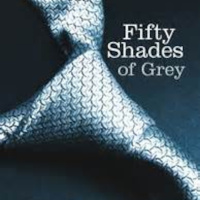Synopsis
Leading writers on arts, history, philosophy, science, religion and beyond, themed across a week - insight, opinion and intellectual surprise
Episodes
-
Quentin Skinner
25/02/2015 Duration: 13minFear is one of the six basic universal emotions (the others are anger, disgust, happiness, sadness and surprise) and like all human emotions not easy to understand. Fear can be played upon, enjoyed, conquered. It is an obstacle to progress ("the only thing to fear is fear itself") and, as we stand at the kerb, it saves our lives every day. This series of The Essay brings you five essays on different aspects of fear.Professor Quentin Skinner of Queen Mary University of London tells the story of how 17th century British philosopher Thomas Hobbes came to believe that "fear and I were twin born" and to write fear into the heart of his political philosophy, arguing that it underpins all human motivation and action.Producer Laura Thomas.
-
Kier-La Janisse
24/02/2015 Duration: 13minFear is one of the six basic universal emotions (the others are anger, disgust, happiness, sadness and surprise) and like all human emotions not easy to understand. Fear can be played upon, enjoyed, conquered. It is an obstacle to progress ("the only thing to fear is fear itself") and, as we stand at the kerb, it saves our lives every day. This series of The Essay brings you five essays on different aspects of fear.Kier-La Janisse is a writer and the Founder of the Miskatonic Institute of Horror Studies, and reflects on how educational films like Dark and Lonely Water, The Finishing Line and Signal 30 have scared more children more deeply than any horror feature film, and explains how - in mid-twentieth century America - fear was exploited to create an educational film boom.Producer Laura Thomas.
-
Matthew Sweet
23/02/2015 Duration: 13minFear is one of the six basic universal emotions (the others are anger, disgust, happiness, sadness and surprise) and like all human emotions not easy to understand. Fear can be played upon, enjoyed, conquered. It is an obstacle to progress ("the only thing to fear is fear itself") and, as we stand at the kerb, it saves our lives every day. This series of The Essay brings you five essays on different aspects of fear.Tonight writer and broadcaster Matthew Sweet uncovers the tragic history of The Little Albert Experiment, conducted by John B Watson, a 1920s psychologist who conditioned a toddler to recoil from a white rat and, eventually, any white fluffy object.Producer Laura Thomas.
-
The Tichborne Claimant
20/02/2015 Duration: 13minYou won't find this photograph in a glossy coffee table book. It's not art and the person who took it doesn't feature in the Photographers Hall of Fame. But this picture has had an enormous impact on our legal system. In 1866 a butcher sat for his photograph in the remote town of Wagga Wagga, Australia. Three years later this likeness had Britain transfixed. Jennifer Tucker tells the story of how it was central to the longest legal battle in 19th-century England, and sparked a debate about evidence, the law, ethics and facial recognition that has continued ever since.Jennifer Tucker is Associate Professor of History and Science in Society at Wesleyan University, USA.Producer: Rosie Dawson.
-
The Broom Cottages
19/02/2015 Duration: 13minYou won't find this photograph in a glossy coffee table book. It's not art and the person who took it doesn't feature in the Photographers Hall of Fame. But this picture has had an enormous impact on the way Britain sees what has come to be known as its cultural heritage.The man who took the photo, W. Jerome Harrison, launched a scheme for recording the country's past in which amateur photographers up and down the land took pictures of the buildings which were important them. Wiki-buildings and English Heritage do this now on a much grander scale. But Elizabeth Edwards argues that the mass participation of people in defining what matters about the past began with Harrison, and changed the way in which a nation viewed itself.Elizabeth Edwards is Research Professor of Photographic History and Director of the Photographic History Research Centre at De Montfort University, Leicester.Producer: Rosie Dawson.
-
The Dogon
18/02/2015 Duration: 13minThe Dogon. Jeanne Haffner on how aerial photography changed the spaces we live in.You won't find this photograph in a glossy coffee table book. It's not art and the person who took it doesn't feature in the Photographers Hall of Fame. But this picture has had an enormous impact on the organisation of our living spaces. The birds-eye photograph of the Dogon tribe working their fields in Mali was taken by the French Africanist Marcel Griaule. He'd trained in aerial photography during the First World War and he argued that the Dogon landscape, seen from the air, revealed the patterns and secrets of the lives of its inhabitants, patterns which could teach Western city planners and architects how to build a happier society.Jeanne Haffner is lecturer in the Department of History and Science at Harvard University.Producer: Rosie Dawson.
-
The Nebula in Orion
17/02/2015 Duration: 12minYou won't find this photograph in a glossy coffee table book. It's not art and the person who took it doesn't feature in the Photographers Hall of Fame. But this picture has had an enormous impact on our world. Today high-resolution photographs of nebulae or galaxies saturate our culture to such an extent that they are almost kitsch. But when Henry Draper took the very first pictures of a nebula in 1880 it was one of the greatest achievements of photography. Omar Nasim tells the story of how this photograph defied the imagination and raised questions not just about the size of the universe but about the very origins of humanity.Omar Nasim is lecturer in the School of History at the University of Kent.Producer: Rosie Dawson.
-
Anna Bertha's Hand
16/02/2015 Duration: 13minYou won't find this photograph in a glossy coffee table book. It's not art and the person who took it doesn't feature in the Photographers Hall of Fame. But this picture has had an enormous impact on the world of medicine and our relationship with our bodies. The photograph of Anna Bertha Ludwig Rontgen's left hand taken in 1896 astounded the scientific world and alarmed the public. For the scientists it signalled the beginning of medical radiography. For the public it gave rise to fears about intrusion and privacy in much the same way as the introduction of the TSA body scanner did in 2007. From medical imaging to airport security, Kelley Wilder shows how X-ray photography changed the world.Kelley Wilder is Reader in Photographic History, De Montfort University, LeicesterProducer: Rosie Dawson.
-
Just Juvenilia: Roger Michell
13/02/2015 Duration: 12minWriters, painters and other practitioners re-visit an early piece of work. And tell us what they think about it now:5. Roger Michell, director of such films as Notting Hill and Hyde Park on Hudson, describes working for the BBC in the 1980's. He was fresh out of theatre, and making his first drama was a huge challenge - aesthetically and technically..
-
Just Juvenilia: Stephen Coates
12/02/2015 Duration: 13minWriters, painters and other practitioners re-visit an early piece of work. And tell us what they think about it now:4. After deciphering some vivid dreams, singer-songwriter Stephen Coates formed a band called The Real Tuesday Weld. He also descended the depths to an underground river in London and this, too, helped with the band's formation..Producer Duncan Minshull.
-
Just Juvenilia: Janet Suzman
11/02/2015 Duration: 14minWriters, painters and other practitioners re-visit an early piece of work. And tell us what they think about it now..3. Actress Janet Suzman was cast as an unknown to play Alexandra in a film about the Romanovs. It was called 'Nicholas and Alexandra', and it meant hello Hollywood! But if she watches herself as Russian royalty these days, what's her response?Producer Duncan Minshull.
-
Just Juvenilia: Harland Miller
11/02/2015 Duration: 13minWriters, painters and other practitioners re-visit an early piece of work. And tell us what they think about it now:2. Writer and painter Harland Miller ran a studio in New York in the early '90s, and was once mesmerised by a strange sign in a cafe. He made some notes about it - then realised his visual sense and love of word-play began to feed off each other...Producer Duncan Minshull.
-
Just Juvenilia: Deborah Moggach
09/02/2015 Duration: 15minWriters, painters and other practitioners re-visit an early piece of work. And tell us what they think about it now:1. Novelist Deborah Moggach wrote her first book in Pakistan, 38 years ago, and her heroine was a rebellious student called Laura. Now, who could that be based upon?Producer Duncan Minshull.
-
Castles in Concrete
30/01/2015 Duration: 13minThe grim, concrete forts and pillboxes of the east coast of England may seem a far cry from the romantic ruins of Britain's medieval castles. But as writer Ken Worpole argues, they have earned their place in the East Anglian landscape, and should be both preserved, and treasured as reminders of our past, just as much as ivy-clad castles and castle ruins from the high middle ages. As somebody who was born in wartime in a castle (his mother was a refugee from the East End) it was perhaps inevitable that Ken would be drawn to play as a child in the redundant forts of Essex, where his imagination could roam riot - unlike the out-of-bounds medieval castle down the road! But the link with medieval castles isn't coincidental. The architecture of many of these forts (and the architecture of the Martello towers constructed to defend the coast during the Napoleonic wars) builds on the legacy of medieval military design, and in turn would go on to influence brutalist architecture of the 1950s onwards. In France, such mi
-
The British Castle: A Woman's Place
29/01/2015 Duration: 13minVery often the visitor to a medieval castle in Britain is confronted with a mass of information and interpretation about the military activities of the men who inhabited these spaces, but very little about the women. Archaeologist Prof. Roberta Gilchcrist is keen to correct this imbalance, and argues that traditional interpretations of castles ignore the gendered spaces - the gardens, the apartments, the kitchens where female servants cooked, or indeed the adjoining parklands where aristocratic women occasionally hunted. There is abundant evidence that women gave birth in castles, and also had a hand in interior design, improving both plumbing and décor. Moreover, some women played a key role in the defence of medieval castles, in the absence of the lord. Archaeological research suggests women definitely did have a place in British castle history.
-
The Siege of Kenilworth
28/01/2015 Duration: 13minThe walls of Kenilworth Castle, situated at the heart of England, might have seemed practically impregnable to the men defending them. And yet, as Dr Benjamin Wild argues in tonight's essay, the mightiest of fortresses was of little more account than a mere folly when men pursued force and fanfare at the expense of political relationships. In 1266 a somewhat humiliated Henry III laid siege to this red sandstone medieval mega-structure, determined to reassert his authority over his upstart subjects. Although the defiant rebels were few in number, they were in a position to taunt Henry. The King, in turn, had to use all the dark arts of propaganda to counter this public relations disaster. He tried to cut a dash in a fancy and highly impractical tunic, and attempted to taunt the starving rebels with the sights and smells of food - including an entire whale with which to feast his troops! Add to that the attempt to enlist the power of religion, by excommunicating the rebels, the siege undoubtedly exhibited eleme
-
Castle Builders
27/01/2015 Duration: 13minIt is generally conceded that, following his triumphant conquest of Wales, Edward I ordered to be constructed some of the finest castles in Britain. But who exactly designed them? And who managed this massive construction project? In general, little is known about the lives and careers of medieval master masons - the equivalent of today's architects. However, as architectural historian Dr Nicola Coldstream argues, we are fortunate in the case of these particular castles to be able to follow the careers of two men in particular: Master James of Savoy, and Master Hugh of Chester. In recent years, much has been made of Master James' architectural genius, a man drafted in from the continent to help bring Edward's project into being. However, as Dr Coldstream argues, Master James' knowledge has been exaggerated. Instead, it appears more likely that his genius lay more in project management than in castle design. Not that that was any lesser task: overseeing various building sites, where thousands of craftsmen were
-
Power and Control
26/01/2015 Duration: 13minIn the Fall and Rise of the British Castle, five writers reflect on the continuing power of the castles, which still dominate not only large sections of the British landscape, but also large areas of our imagination.In this first of the series, historian Professor Jeremy Black gives an overall view of the castle as an instrument of power and control, built to withstand siege warfare - a lesson which, by the eighteenth century, had been all but forgotten. At the height of the Jacobite Rebellion one Scottish lord had cause to regret having removed the iron bars from his castle windows, and weakening the walls by adding graceful wings to his residence. Would his stone residence survive the onslaught of the rebels? As Professor Black argues, he had forgotten the primary function of a castle, namely to to maintain the rule of force and government in Britain. Castles, whether built of timber, or stone, or both, were intended to promote a powerful symbol of authority over society. That they came to be built througho
-
Lolita Chakrabarti on A Tale of Two Cities
22/01/2015 Duration: 14minActor and playwright Lolita Chakrabarti explains how "A Tale of Two Cities" by Charles Dickens affected her at a pivotal moment in her life. She first came across the novel at the age of 15, as a set text at school. Dickens's account of the French Revolution mirrored the tumult of the politics of the mid-1980s, while his narrative seized her imagination. "He paints pictures with words succinctly and with no pretension. He tells a cracking story, has a great sense of humour and creates credible, compelling characters," she says. The novel's portrayal of personality influenced her acting, leading her to search for the emotional impulse motivating each character. No wonder she still keeps her original paperback copy: "Many of the pages are loose, but I'm loath to throw it away because this book opened a door for me." Producer: Smita Patel.
-
Jon Ronson on What a Carve Up!
21/01/2015 Duration: 14minJournalist and writer Jon Ronson explains the electrifying effect of reading Jonathan Coe's "What a Carve Up!" He first came across the satirical novel as a care-free nightclubber in his 20s. "It politicized me in a way," Ronson says, making him "understand that big politics affect those of us down here just trying to shuffle our way through life". He was horrified and fascinated by the Winshaws, the grotesque family at the centre of the book, who typify the excesses of the Thatcher years. Ronson says the book was a deep influence on his own writing. "I wanted to pass on to my own readers the great revelation I'd learned from 'What A Carve Up!' - that powerful, crazy people affect our lives in ways we barely notice." Producer: Smita Patel.













